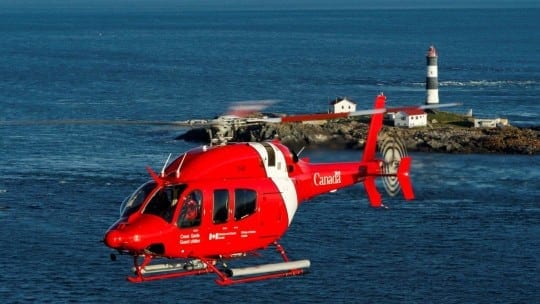

The Trend: What’s trending is brand. I attended the CEB Chief Communications Officers Roundtable recently and while there were several trends discussed, as soon as we touched on brand we stayed there. Among the topics discussed were “what is communications’ and PR’s role in brand?” And “what is brand’s role in PR and communications?”
The Reaction:What makes this extremely timely for Bell Helicopter is it relates to the recent reorganization of my team. We looked very hard at how we do business. We asked: “Are we doing enough to leverage the brand?” “Are we getting enough value out of the brand?” And “are we contributing to the value of the brand?”
My CEO, Mitch Snyder, has a way of crystallizing issues. He loves Corvettes. It’s the only car he drives. So he asked me, “Bob, how do we get people to only want to fly Bell Helicopters? Period.”
Creating a Brand Engagement Team
So in the reorganization we created a brand team within corporate communications. We took people who work for us on trade shows, people from our special events section, our protocol manager who deals with special visitors, all our creative people and strategists and put them on one team that we call Brand Engagement. Their job is to make sure that the Bell Helicopter brand is at the heart of all of our communications. Whether it’s a simple press release or a more complex activity, such as an exhibit at a major trade show, it is their job to ensure that the brand and the brand message are at the foundation of everything we do.
Traditionally, we began every communications plan with the question “What is the business objective?” We still ask that question, of course, but now our second question is, “Where does the value of the brand contribute to the success of this mission?” Or, “How does this mission contribute to the strength of the brand?”
Let’s take a large trade show, for example. We begin by asking, “How do we want the world to see the Bell Helicopter brand? What are the brand attributes we want to emphasize?” We build the plan for our entire participation in the trade show from there.
We recently added a new attribute to our brand: innovation. In addition, we added an objective: to demonstrate that Bell Helicopter is the leading innovator in the helicopter industry. So at the recent Heli-Expo, the trade show that is our biggest event, we used those two points to drive all our communications activities.
They were emphasized during the CEO’s press briefing, analysts’ briefing and they led our One Voice, which is the document we prepare so that all Bell personnel at the show speak with a single voice. In addition all the video production we did for the show was built around those two points. This helped us put the brand in the middle of everything we did.
Perhaps one of the most remote corners of communications is what we call protocol, or how we handle distinguished visitors. For us, visitors largely are customers or prospective customers. We now have an objective and outcome for every distinguished visitor who visits. As a defense contractor, every visitor who steps on our property is registered into a security system. Normally such visits are arranged in advance; now, that information also comes to communications.
When the visitor is a key decision maker, a member of the media, legislative or investment communities, my team will be flagged. We have four tiers of visitors. For key visitors we build a visit plan by asking: What are the customer’s objectives and how do we meet them? What are Bell’s objectives for this visit? What tools and resources are needed so that visit is handled well and we meet our objectives of reinforcing the brand? How do we make sure there’s a consistent experience at Bell facilities all around the world?
Emphasizing the Brand Experience
If it’s a customer, we want to get them in front of the information they came to receive. What’s different now is that we’re emphasizing the experience they take to get to that information. So, for example, in the past a customer might be sent directly to a conference room for a meeting. Now we’ll provide that customer a brand experience. Someone who has been trained will meet the visitor at the front door and walk them along what we call our heritage wall. All our major facilities have them. The walk gives us the opportunity to emphasize different points for different customers.
I recently met a foreign military customer who was interested in attack helicopters. As I took the customer along the wall, we stopped at key points that emphasized the message the customer was about to receive from sales. The sales message normally is focused on product attributes. The experience of going down the hall showed the customer why Bell could build the best helicopter. We do this for legislative and media visitors, too.
We use the same thought process at trade shows and media days. For example, we ask, “What experience do we want a reporter to have before he or she gets to the conference room table with the CEO? How do we emphasize the company’s attributes in such a way that the reporter is mentally prepared for the conversation they’re going to have?”
We also take the brand-first approach with written communications. We consider the brand messages and brand attributes we want to put out through our channels.
CONTACT: [email protected]
